Training
Spark & Co: What To Expect When You Hire One Of The Top Learning Development Companies?
More and more organizations are outsourcing their training to learning development companies. But what can...
Read MoreCustomer Education is the most underestimated competitive advantage organizations have. And while traditionally it applied to businesses selling widgets or software, customer education now also applies to governments, and non-profits, who have a product or service. The benefits of customer education are many. As are the types of programs and the components you could choose to include. There isn’t a one-size-fits-all approach. So, we describe what customer education is. And each of its components along with what they’re best at achieving. And we provide examples along the way. This is the second in a series on customer training so you can create a powerful customer education program for your organization.
Organizations need to educate their customers on the products or services they sell. For example, when buying a table from IKEA you also receive a set of instructions. These illustrations show the customer how to put the table together. Similarly, the self-help screens when installing a new software product on your phone, laptop, or tablet.
Traditionally customer education was a set of instructions on how-to-use widget X. Whether that was a new appliance, specialized technical equipment, or a software application. But, the definition of a customer has evolved. And, customer education isn’t limited to only for-profit companies. Government entities also need to educate customers (their taxpayers). And many non-profit organizations are educating their customers.
As well, customer education has evolved. From a function that was undertaken post-purchase, it now replaces some marketing activities. And is also used to educate customers to better understand your product or service. So, they can make an informed decision to buy. The line between customer education pre-purchase and marketing is somewhat grey. But it helps customers understand, and feel comfortable with, your product or service. Making them more likely to make a purchase.
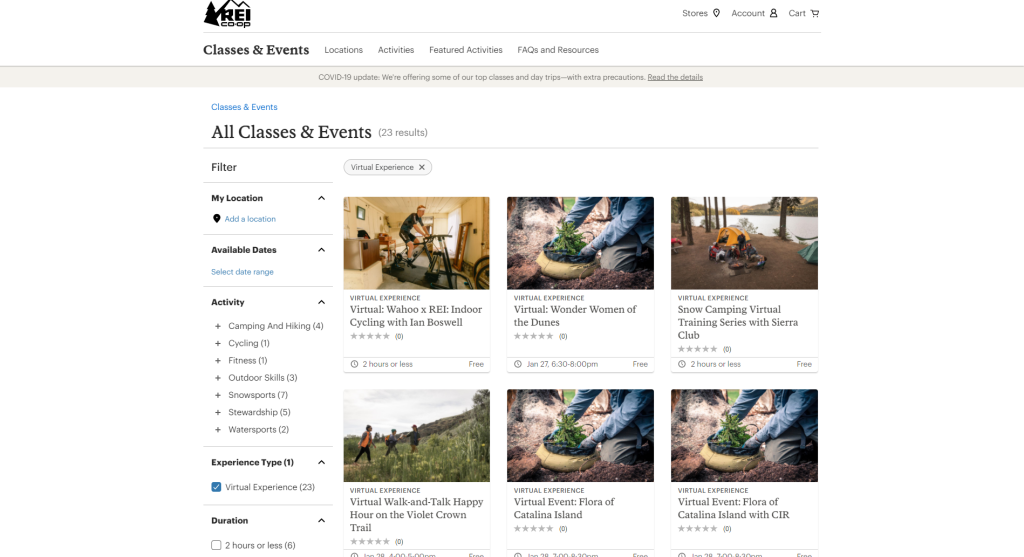
The Non-Profit, REI Co-Op’s, Customer Education
Customer education is defined by Adam Avramescu’s as follows:
“A Customer Education function strategically accelerates account and user growth by changing behaviors, reducing barriers to value, and improving the way people work.”
That is providing your customers with the tools, resources, and knowledge they need to be successful using your product or service. That is needed for a Charity educating people on health or social issues. And a construction association educating its members on new regulations. As well as for Apple educating its customers on the latest features of its iPhone.
Whatever the specific circumstances, customer education needs to be strategic and very user-focused. It is not a one-size-fits-all solution. For example, you would not get many customers taking a full day course to learn how to put together an IKEA table. Or how to access the latest iPhone feature. But, you would get people taking a day-long course on how to build your ultimate log cabin as part of the sale of a recreational home. Or to educate themselves on an important therapy to treat their illness or disease. Yet, the day-long course to build a log cabin might not be that useful for a carpenter. She might only need to ask a few questions before starting. Being able to respond with customer education to your specific user is critical.
Finally, the definition above emphasizes value. Value to the end-user, or the customer. And value to the organization selling the product or service. An organization doesn’t educate customers solely because it’s a nice thing to do. It needs to have benefits for the organization too.
There are many benefits to creating and delivering good customer education. While not all the benefits will apply in all situations, many apply in all circumstances. For example, when selling a product directly to a consumer. Or selling a service to a business. And providing a product or service to your members or a segment of the public at large.
“Customer Education is the most underestimated competitive advantage”.
Alesso Artuffo, Docebo
Do you need a customer education program for your organization? Or do you need to change, or expand your current program? As shown above there are many benefits from a customer education program. And not only for those that sell widgets or software.
But perhaps you think customer education is overrated? Then think about your favorite pasta sauce and look on the back label—there’s always a recipe for an awesome dish. They don’t only sell you a product, they teach you how to use it. That’s the norm today. Customer education is table stakes for any organization.
While customer education comes in all shapes and sizes it is especially beneficial for companies with:
And from a marketing perspective, organizations
“Learning organizations are increasingly pursuing customer education and channel partner education to increase revenue, improve customer satisfaction, and drive competitive differentiation”
Customer Education: Definition, Measures and Effects on Customer Satisfaction: 2007 – Benoit Aubert
The bottom line is that every organization needs to prove that their services and products are needed. Rather than demanding that customers believe it to be so.
The good news is that customers are better informed than ever when it comes to making purchases. The bad news is there’s often little difference between marketing materials and educational materials. (Forbes)
A webpage dedicated to the features of a product or service will not be successful on its own. Customers want context; they want to know about the product/service as it exists in the real world. They want to know which problems that it will solve, and what experts in the field think of its merits.
What we’re talking about is insight. And in a world with elaborate marketing tactics, it’s more important than ever before. As a result, educating your customers has become a common way to inform your customers. And to show that you are an authority in the eyes of your customer.
Customer education pre-purchase takes many forms and often includes the following:
There are many components that you can include in a customer education program. Often which ones and how extensive are determined by the complexity of the product/service. And the knowledge level of the customer. In many cases, you may have several versions available for the different knowledge levels of your customers.
Built-in help is a common component of customer education, especially for software products 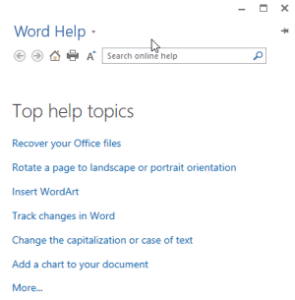
A good customer education program will have a great self-help section. Users and customers want easy, accessible, and intuitive self-serve help. Especially on basic features and functions. A quick start guide and some task-oriented documents are a must. But whatever you develop, it has to integrate into your product. And it needs to use language and terminology that your customer understands. And that you’ve used with your other products that customers have used.
You can also enhance your self-help with micro-videos and walk-throughs. Walkthroughs are a pop up on the existing screen that provides help, tips, or instructions. And later on, you can use your help screenshots and micro-videos in your product tutorials. Think of these like Lego pieces that you can use to build other parts of your customer education.
Customers want to help themselves as much as possible. And 53% of U.S. online adults will abandon their online order if they can’t find a quick answer to their question. So, it makes sense to provide them with the resources they need. A knowledge base is a way to do this. Knowledge bases are another tool in your customer education toolbox. They provide your users with a self-serve option for their product related questions. Knowledge bases are not only another way to provide product help, but they also allow you to add extra education elements.
One thing to ensure when you create a knowledge base is to develop it from the perspective of your customer. Too many times knowledge bases are created from a developers perspective. If you’re not sure test it with some of your customers, or do a focus group to get feedback.
A useful feature of knowledge bases is that you can use the commonly accessed help pages to see where people need more information. And also use queries that come through customer support/help desk or other avenues. Thus being able to add relevant self-help information for your customers.
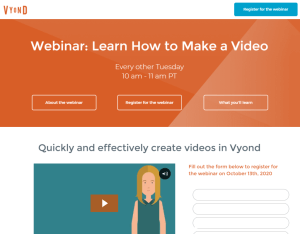
Live webinars are often a place where new customer education teams start. They tend to be cheaper and need less instructional design and use tools that are often already at hand. As well, they are good for instant user feedback. And to gauge where users are looking for more support and insight.
As well live webinars can also help you develop a sense of community among users. Yet, customer education teams might find themselves trapped in a cycle of endless webinar scheduling. And Live Webinars are less effective if you have a global audience. Unless you plan on scheduling the same Live webinar many times to cover time zones around the world. Also, if the length of the content is over 45 mins you need to break it up into more than one live webinar. Or complete some aspects through other channels. 85% of people prefer webinars to last 30-45 mins. Live webinars are also much more effective if they are interactive. Otherwise, why have a Live webinar instead of a pre-recorded session?
If you are in a position where live webinars are no longer a great fit for your program, you should transition into self-paced on-demand options. Otherwise known as e-learning. And there is a simple way to transition from Live Webinars to e-learning. Simply record a live webinar and use the slides and recorded video and audio as the basis for your e-learning. While you will need some post-production work to polish it, it can give you a minimum viable product to start with. One of the nice things it offers is an informal, casual tone.
A good example is GeoEnviroPro who provides training for environmental professionals. Working with them Spark + Co have developed a series of e-learning modules by converting their recorded webinars. This has resulted in their customers having access to, on-demand, self-paced education. All produced on a modest budget.
2 screenshots from GeoEnviroPro’s on-demand webinar
Tutorials are often video demonstrations. Think of the How-to videos that are all over YouTube. Tutorials are similar and have a broad audience of users who are researching specific items. Or comparing multiple products.
While you can do tutorials as a blog post or as a series of images on your website, a video has by far the highest engagement rates. The true nature of a product or service doesn’t always come across in images and descriptions. The benefits of some products aren’t always clear, and video is often the best way to demonstrate them.
Tutorials are a great way to provide a guided introduction for the user. As well as inserting other features that could help users better understand the potential of your product. A savvy customer education pro would also re-use this content for marketing, and other business functions.
Tutorials can cover many subject areas. For example, as these examples show. Asana an online project management tool, and Urban Decay, a Canadian cosmetics company. Both are in very different industries, and both have very different customers. But they both use product tutorials extensively in their customer education.

Product tutorial customer education from 2 very different organizations
The core of many customer education programs is on-demand e-learning courses. For example, customer education for software companies often includes software simulations. In software simulations, there is an interactive layer allowing users to engage with a recording of the software. So, you can add captions, and guide users through workflow or processes. And still not have users touch the production environment.
While product tutorials are often feature-driven, e-learning weaves together individual feature tutorials. Creating more in-depth instruction. For non-software companies, you can show how the product or service is used on the job. Or you can show them how to use a piece of equipment and key parts of the product. All within a realistic work setting.
For example, Spark + Co has developed many e-learning modules for BC Renal. These are for patient education. They include several components about how to work a dialysis machine. But there is a wide array of other information as well. Such as when to use it, where to use it, what to do when you’re not feeling well or how to work with your care team.
An academy is a collection of training programs to get the most out of your organization’s product or service. It goes well beyond focusing on the function of the product or service you provide. It offers an in-depth program for customer education. For example, in an academy, you can share tutorials or courses that give your user an extra set of skills. Complementing their use of the product. A project management software academy might include tutorials to help create a work breakdown structure. Or manage a stakeholder engagement campaign. Or conduct a post-project assessment for lessons learned. Besides how to use the product.
These extra programs provided in the academy aren’t necessary to use the product itself. But users might want to take them to upgrade their skills. People who complete these courses become your product champions or ambassadors. And they may even pay for these programs themselves. Creating an extra revenue stream.
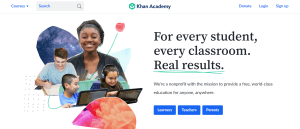
Khan Academy
Academy education is often self-paced. Since on-demand tutorials work well if you have large numbers of customers needing education. Or that are spread over large geographical regions and time zones. When customer education teams are ready to develop an academy, they are typically operating in a very competitive market. And an academy can help them stand out. And are as much a function of lead generation as they are customer education.
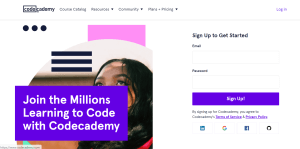
Codecademy
Examples of academies include software products and services such as Canva, Techsmith, and Miro. Two of the most famous examples are Khan Academy or Codecademy. Khan Academy is a non-profit with a mission to provide free, world-class education for anyone, anywhere. While Codecademy, a start-up venture capital-funded company helps millions of learners to get the skills they need to succeed in today’s digital world.
A certification program is a defined set of components or training programs offered to customers to prove that they have achieved a level of knowledge. Ultimately this results in a certificate that shows the holder has met a specific standard. Customer education certificate programs are ways to develop a grassroots user base into an army of experts and a bottom-up sales channel. The certified users take their expertise with your product from company to company as they move throughout their careers. Thus, expanding your user base. It also signals that you have enough authority with the user community to set de facto industry standards. Common ones are Microsoft, Cisco, Amazon, Google, and Salesforce. These certifications tend to be cross-industry tools and software.
Such programs are rigorous and entail a significant amount of effort to establish. So are best used when you are the dominant player in a market. And when there is enterprise demand for your products or services. Your certification also needs to be complex enough to be too costly for your customers to create themselves.
Virtual classroom training is used for providing training beyond the basics. Such as for custom offerings for enterprise customers. Often the customer education training is more complex or more nuanced. While on-demand options are efficient, virtual live sessions can be a high-touch way to engage high-value customers. These are premium offerings for customer education teams.
An online community are people with a shared interest or purpose. Who uses the internet to communicate with each other. Online communities have their own set of guidelines and needs, online community engagement, moderation, and management.
Twenty-seven percent of consumers use online communities when researching products and services. And online communities are an innovative way to improve customer retention and build brand loyalty. For example, satisfied customers are five times more likely to buy from your organization again. And four times more likely to refer your brand to friends and family.
You might create a branded online community to bring people together around a shared organization experience. Largely for online collaboration and growth. The type of community connects your members, customers, employees, and partners. These communities break down the one-way exchange of info & open up communication to deliver increased value.
And they are very different from Facebook or LinkedIn. While an average person might casually spend time on Facebook, members of private communities invest time with a purposeful mindset. Using it as an opportunity for personal or professional growth. There are broadly three types of online communities:
Once your customers are signed up in your online community there are many things they can do. If it’s a community for a specific product, the purpose would be to learn, educate, and network with similar people. They might
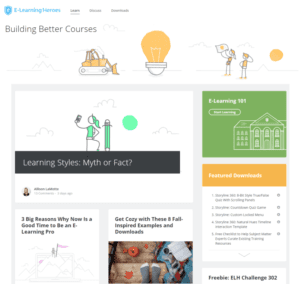
Articulates E-Learning Heroes Community
An example of a successful online community is the Articulate community. It is known throughout the e-learning industry as THE place to go to ask for help. Even with the competitor software! Users are generous with their time and support and it’s got a culture of being very positive and helpful.
Besides the components discussed above, below are other things to include in a customer education program.
There isn’t a playbook to follow to determine what you should include in your customer education. The most important factor is to use the components that provide the most value to your customers. And you definitely should not choose every component. Decide what makes the most sense for your customer, your organization, and your product or service. Mix and match a few of the components to find the best combination for your needs.
And recognize that this will likely change over time.
As noted above, there are few rules on what to select for your customer education program. So, we’ve developed 5 examples to illustrate what you should consider providing in these scenarios. These apply no matter the organization you are in, for-profit, non-profit, government, or NGO.
Appetite to Play is a program funded by Child Health BC. A government entity that supports early years providers promotes and encourages physical activity and healthy eating. Appetite to Play provides healthy eating and physical activity recommended practices to use in a variety of settings. Including daycare centers, family-based childcare, preschool, and parent participation programs.
The customer education provided at the Appetite to Play website is for child care operators who work with children 6 years old and under. The program has many tools. Including games, recipes, activity ideas, schedule builders, and more. All designed around healthy eating and physical activity. The customer education focuses on showing the child care operators how to use the tools provided. The components of customer education used include built-in-help, live webinars, and e-learning tutorials developed by Spark + Co.
Miro provides an online visual collaboration platform or whiteboard. Designed for teams that are co-located, distributed, or fully remote. It provides an engaging, in-person collaboration experience, with many options for real-time or asynchronous teamwork on an online whiteboard.
Miro provides a lot of customer education. Including a lot of pre-sale customer education. Their extensive customer education program includes
The video below provides an insider’s look from an instructional designer’s perspective into the customer education provided by Miro.
Customer Education is the most underestimated competitive advantage organizations have. And while it applied to businesses selling widgets or software, it also applies to governments. And non-profits, who have a product or service. As discussed, the benefits of customer education are many. As are the types of programs and the components you could choose to include in a customer education program. There isn’t a one-size-fits-all approach. And that is how you can differentiate your organization. Nor are there a set of rules for developing your customer education program. But in now understanding the components and what they focus on, you can select those most effective for your organization. And create a powerful customer education program.